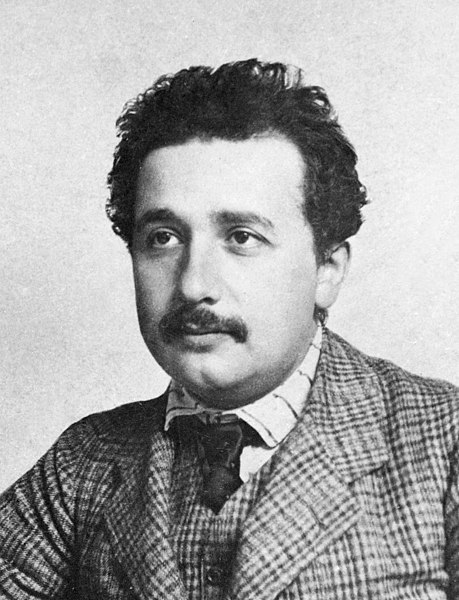 |
Q-manifolds are supermanifolds equipped with a Grassmann odd vector field that `squares to zero’, which is known as a homological vector field. Such things can be found behind the AKSZ-BV formalism in mathematical physics and in differential geometry they encode Lie algebroids and Courant algebroids amongst other things. The notion of the modular class of a Q-manifold is known to experts but there is not much in the literature to date. |
In the preprint entitled “Modular classes of Q-manifolds: a review and some applications”, I review the notion of the modular class of a Q-manifold – which is understood as the obstruction to the existence of a Berezin volume that is invariant under the action of the homological vector field. The modular class is naturally defined in terms of the divergence of a chosen Berezin volume, but is independent of this choice. The notion directly generalises the notion of the modular class of a Poisson manifold (Koszul [1] and Weinstein [2]) and that of a Lie algebroid (Evans & Weinstein [3]).
I discuss the basic constructs and immediate consequences, all of which are probably known to the handful of experts. Maybe more interesting is that fact that I then apply this to double Lie algebroids ([4,5,6] ) and higher Poisson manifolds [7]. Along the way I make several observations which I believe maybe genuinely new. Either way, having these ideas written clearly in one place is beneficial to the community.
The basic idea
A Q-manifold is a pair \((M,Q)\), where \(M\) is a supermanifold and \(Q \in Vect(M)\) is an odd vector field that ‘self commutes’
\(Q^2 = \frac{1}{2} [Q,Q] =\frac{1}{2} \left( Q \circ Q – (-1)^{1} Q \circ Q \right)\),
note the extra minus sign as compared with the classical case of vector fields on a manifold. This means that `squaring to zero’ is a non-trivial condition. Moreover, as we have an odd vector field that squares to zero we have a differential and so a cohomology theory. In particular, \((C^{\infty}(M), Q )\) is a cochain complex and the related cohomology we refer to as the standard cohomology.
Given any Berezin volume \(\mathbf{\rho} = D[x] \rho(x)\), we can define the divergence of \(Q\) with respect to this volume:
\(L_{Q} \mathbf{\rho} = \mathbf{\rho} {Div}_{\rho}(Q). \)
Note that \({Div}_{\rho}(Q)\) is then a Grassmann odd function on \(M\) and it is \(Q\)-closed. Moreover, it turns out that under change of the Berezin volume the divergence of \(Q\) changes by a \(Q\)-exact term. Thus, we can define the modular class as the standard cohomology class of the divergence of the homological vector field and this does not depend on any chosen Berezin volume
\(Mod(Q) = [Div_{\mathbf{\rho}}(Q)]_{St}. \)
In local coordinates \(Q = Q^{a}(x)\frac{\partial}{\partial x^a}\) and so the modular class has a local characteristic representative
\(\phi_{Q}(x) = \frac{\partial Q^{a}}{\partial{x^a}}(x),\)
which corresponds to picking the standard coordinate volume (we simply drop the \(Q\)-exact term in the definition of the divergence). Moreover, we do not have a Poincare lemma here and so thinking of local representatives of cohomology classes makes sense in general.
In this way we associate to any Q-manifold a characteristic class in its standard cohomology. The modular class is one of the simplest such classes one can imagine on a Q-manifold. There are more complicated things, see [8].
Thanks
I thank prof. Janauzs Grabowski for giving me the opportunity to present some of the ideas in this preprint at a Geometric Methods in Physics seminar in Warsaw on April 26th 2017. I also thank Florian Schatz for reading an earlier draft of this preprint.
References
[1] Koszul, J., Crochet de Schouten-Nijenhuis et cohomologie, The mathematical heritage of Elie Cartan (Lyon, 1984), Asterisque 1985, Numero Hors Serie, 257–271.
[2] Weinstein A., The modular automorphism group of a Poisson manifold, J. Geom. Phys. 23 (1997), 379–394.
[3] Evens, S., Lu, J.H., Weinstein, A., Transverse measures, the modular class and a cohomology pairing for Lie algebroids, Quart. J. Math. Ser. 2 50 (1999), 417–436.
[4] Mackenzie, K.C.H., Double Lie algebroids and second-order geometry, I., Adv. Math. 94 (1992), no. 2, 180–239.
[5] Mackenzie, K.C.H., Double Lie algebroids and second-order geometry, II., Adv. Math. 154 (2000), no. 1, 46–75.
[6] Voronov, Th., Q-manifolds and Mackenzie theory, Comm. Math. Phys. 315 (2012), no. 2, 279–310.
[7] Voronov, Th., Higher derived brackets and homotopy algebras, J. Pure Appl. Algebra 202 (2005), no. 1-3, 133–153.
[8] Lyakhovich, S.L., Mosman, E.A., Sharapov, A.A., Characteristic classes of Q-manifolds: classification and applications, J. Geom. Phys. 60 (2010), no. 5, 729–759.
